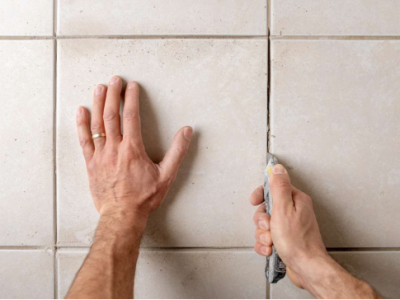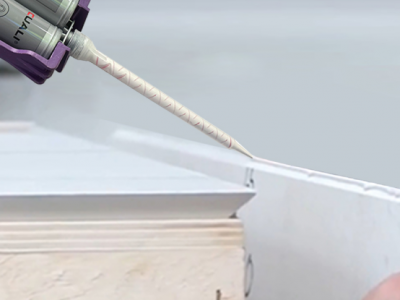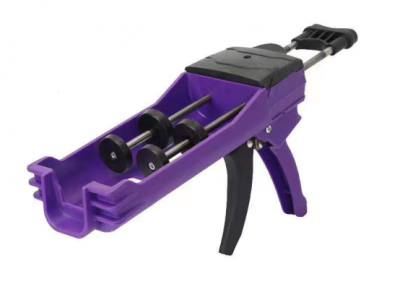In the fast-evolving world of construction and manufacturing, the choice of adhesive can determine the success, safety, and longevity of your projects. While traditional adhesives like epoxy, silicone, and polyurethane have long dominated the market, MS Polymer Adhesive (Modified Silane Polymer) has emerged as a versatile, high-performance alternative. At CUALI, a leader in innovative building chemical solutions, we specialize in advanced adhesives, including our premium MS Polymer Adhesive, designed to address the limitations of conventional products. In this comprehensive guide, we’ll compare MS Polymer Adhesive to traditional adhesives, exploring their strengths, weaknesses, and ideal applications to help you make an informed decision.
MS Polymer Adhesive is a hybrid bonding material that combines the flexibility of silicone with the strength of polyurethane. It cures through a moisture-induced reaction, forming durable, elastic bonds that withstand environmental stressors like UV exposure, temperature fluctuations, and moisture. Unlike traditional adhesives, MS Polymer Adhesive is solvent-free, low in VOCs (volatile organic compounds), and compatible with a wide range of substrates, including metals, plastics, glass, and concrete.
At CUALI, our MS Polymer Adhesive is engineered for superior performance in demanding applications, from automotive assembly to structural glazing. Let’s dive into how it stacks up against traditional options.
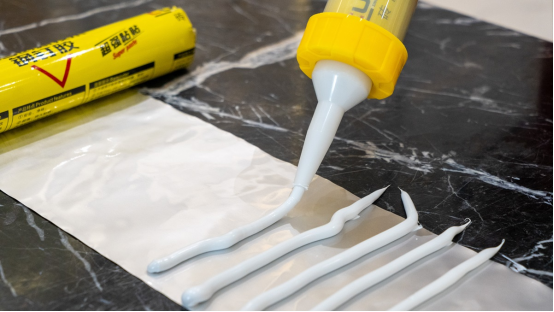
Traditional Adhesives: A Quick Overview
Before analyzing MS Polymer Adhesive, it’s essential to understand the pros and cons of common traditional adhesives:
-Pros: High strength, chemical resistance, rigid bonds.
-Cons: Brittle over time, requires precise mixing, limited flexibility.
-Pros: Excellent flexibility, waterproof, UV-resistant.
-Cons: Low structural strength, poor adhesion to non-porous surfaces.
3. Polyurethane Adhesive:
-Pros: Strong, flexible bonds, good gap-filling.
-Cons: Sensitive to moisture during curing, emits VOCs.
MS Polymer Adhesive vs. Traditional Adhesives: Key Comparisons
1. Bonding Strength and Flexibility
•MS Polymer Adhesive:
-Combines high tensile strength (up to 3 MPa) with exceptional elasticity, allowing it to absorb vibrations and movement without cracking.
-Ideal for dynamic joints in construction (e.g., curtain walls, flooring) or automotive parts.
•Traditional Adhesives:
-Epoxy offers rigid strength but becomes brittle under stress.
-Silicone prioritizes flexibility over load-bearing capacity.
CUALI Case Study: A bridge expansion joint sealed with MS Polymer Adhesive endured 10+ years of traffic vibrations without failure, outperforming epoxy-based solutions.
2. Environmental Resistance
•MS Polymer Adhesive:
-UV-stable: Retains properties under direct sunlight, unlike yellowing polyurethane.
-Waterproof: Forms impermeable bonds, resisting mold and moisture damage.
-Temperature range: Performs in -40°C to 90°C (-40°F to 194°F).
•Traditional Adhesives:
-Silicone handles temperature extremes but degrades under mechanical stress.
-Epoxy cracks in freeze-thaw cycles.
Example: MS Polymer Adhesive is widely used in marine applications, such as bonding boat hulls, where saltwater and humidity would degrade traditional adhesives.
3. Ease of Application
•MS Polymer Adhesive:
-Single-component: No mixing required, reducing errors and waste.
-Cures with ambient moisture, simplifying large-scale projects.
-Non-sag formula: Stays in place on vertical surfaces.
•Traditional Adhesives:
-Epoxy requires precise resin-hardener ratios.
-Polyurethane needs controlled humidity for curing.
4. Safety and Sustainability
•MS Polymer Adhesive:
-Solvent-free and low-VOC: Safe for indoor use, complying with global eco-standards (e.g., LEED, REACH).
-Recyclable: Supports green building initiatives.
•Traditional Adhesives:
-Epoxy and polyurethane often contain harmful solvents.
-Silicone is non-toxic but difficult to recycle.
CUALI’s Commitment: Our MS Polymer Adhesive line is certified low-VOC, ensuring safer workspaces and reduced environmental impact.
5. Cost and Long-Term Value
•MS Polymer Adhesive:
-Higher upfront cost than silicone or polyurethane.
-Long-term savings: Reduced maintenance, longer lifespan.
•Traditional Adhesives:
-Epoxy is cost-effective initially but prone to costly repairs.
-Silicone requires frequent reapplication in high-stress areas.
Side-by-Side Comparison Table
Property | MS Polymer Adhesive | Epoxy | Silicone | Polyurethane |
Strength | High, flexible | Very high, rigid | Low | Moderate |
Flexibility | Excellent (up to 600% elongation) | None | Excellent | Good |
UV Resistance | Excellent | Poor | Excellent | Moderate |
Water Resistance | Fully waterproof | Water-resistant | Waterproof | Water-resistant |
Curing Time | 24–48 hours (moisture-cure) | 1–24 hours | 24 hours | 12–72 hours |
VOC Emissions | Low/None | High | Low | Moderate |
Cost | $$ | $ | $$ | $$ |
Pros and Cons of MS Polymer Adhesive
Advantages
1. Versatility: Bonds diverse materials (metal, glass, plastics, wood).
2. Durability: Withstands UV, moisture, and thermal cycling.
3. Eco-Friendly: Low carbon footprint, recyclable.
4. User-Friendly: No mixing, non-sag application.
5. Aesthetic: Paintable and available in multiple colors.
Limitations
1. Higher Initial Cost: Pricier than silicone or epoxy.
2. Curing Dependency: Requires ambient moisture; slower in arid climates.
3. Temperature Sensitivity: Avoid application below 5°C (41°F).
When to Use MS Polymer Adhesive vs. Traditional Options
Ideal Applications for MS Polymer Adhesive
•Construction: Sealing expansion joints, bonding facade panels, roofing membranes.
•Automotive: Assembling trim, headlights, or vibration-prone components.
•Marine: Waterproof bonding of decks, hulls, and fittings.
•DIY Projects: Installing mirrors, tiles, or outdoor furniture.
CUALI Tip: For structural glazing, our MS Polymer Adhesive ensures lasting adhesion even in skyscraper-grade wind loads.
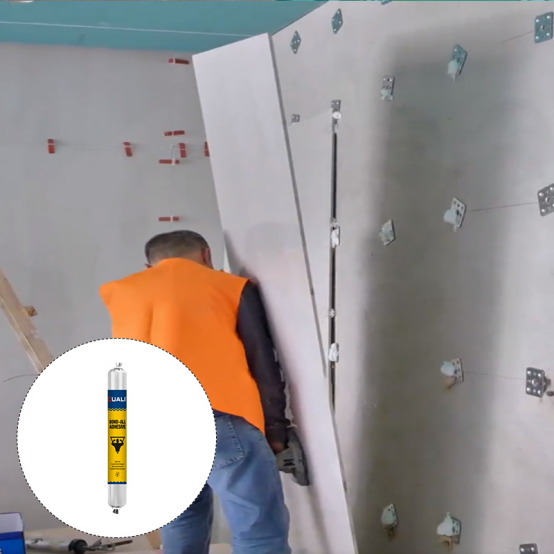
When Traditional Adhesives May Suffice
•Epoxy: Static, heavy-load bonds (e.g., machinery repair).
•Silicone: Bathroom caulking or high-temperature gaskets.
•Polyurethane: Low-cost gap-filling in dry environments.
Why Choose CUALI’s MS Polymer Adhesive?
At CUALI, we’ve refined MS Polymer Adhesive technology to deliver:
1. Enhanced Adhesion: Proprietary formulas for challenging substrates.
2. Fast Cure Options: Accelerated curing in humid conditions.
3. Custom Solutions: Tailored adhesives for niche industries (e.g., solar panel mounting).
4. Technical Support: End-to-end guidance from selection to application.
FAQs About MS Polymer Adhesive
Q: Can MS Polymer Adhesive replace mechanical fasteners?
A: Yes! Its high strength and flexibility make it suitable for load-bearing joints in many applications.
Q: Is MS Polymer Adhesive paintable?
A: Absolutely. Unlike silicone, CUALI’s MS Polymer Adhesive accepts most paints after curing.
Q: How does humidity affect curing?
A: Higher humidity accelerates curing. In dry climates, lightly misting the surface can help.
Conclusion: MS Polymer Adhesive – The Future of Bonding
While traditional adhesives still have niche roles, MS Polymer Adhesive offers a unmatched balance of strength, flexibility, and sustainability. Its ability to perform in extreme conditions, coupled with eco-friendly credentials, makes it the go-to choice for modern construction and manufacturing.
At CUALI, we’re proud to lead the charge in MS Polymer Adhesive innovation, providing solutions that outlast and outperform conventional options. Whether you’re sealing a high-rise curtain wall or crafting custom furniture, trust CUALI’s MS Polymer Adhesive to deliver bonds that endure.
Ready to upgrade your adhesive strategy? Explore CUALI’s MS Polymer Adhesive range today and experience the future of bonding technology.



